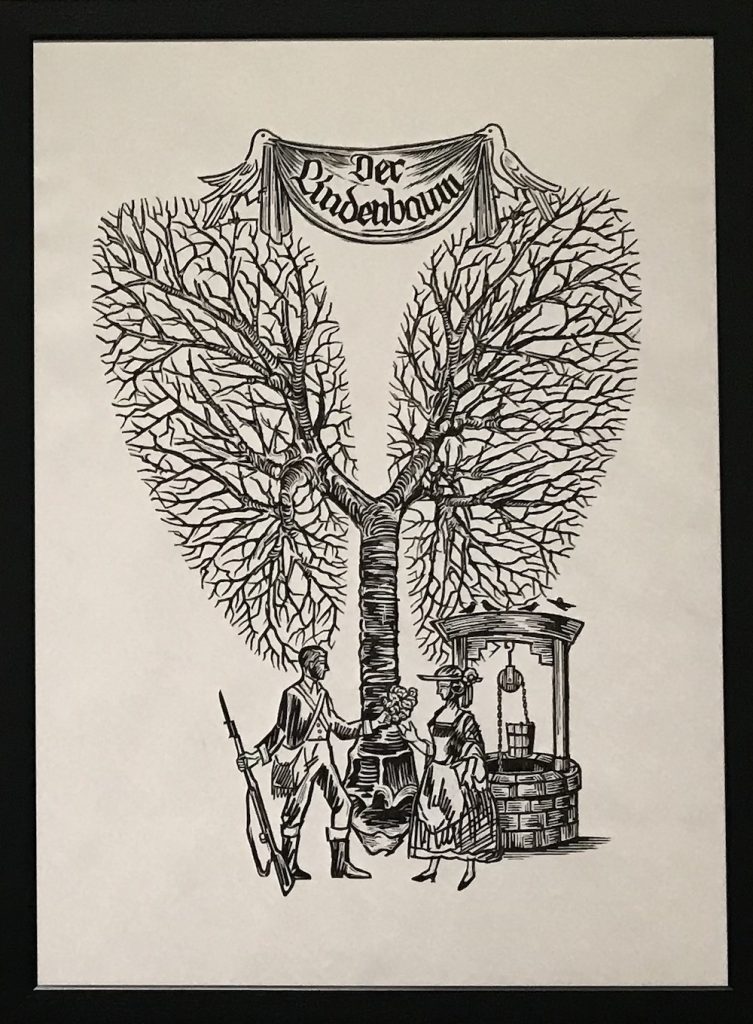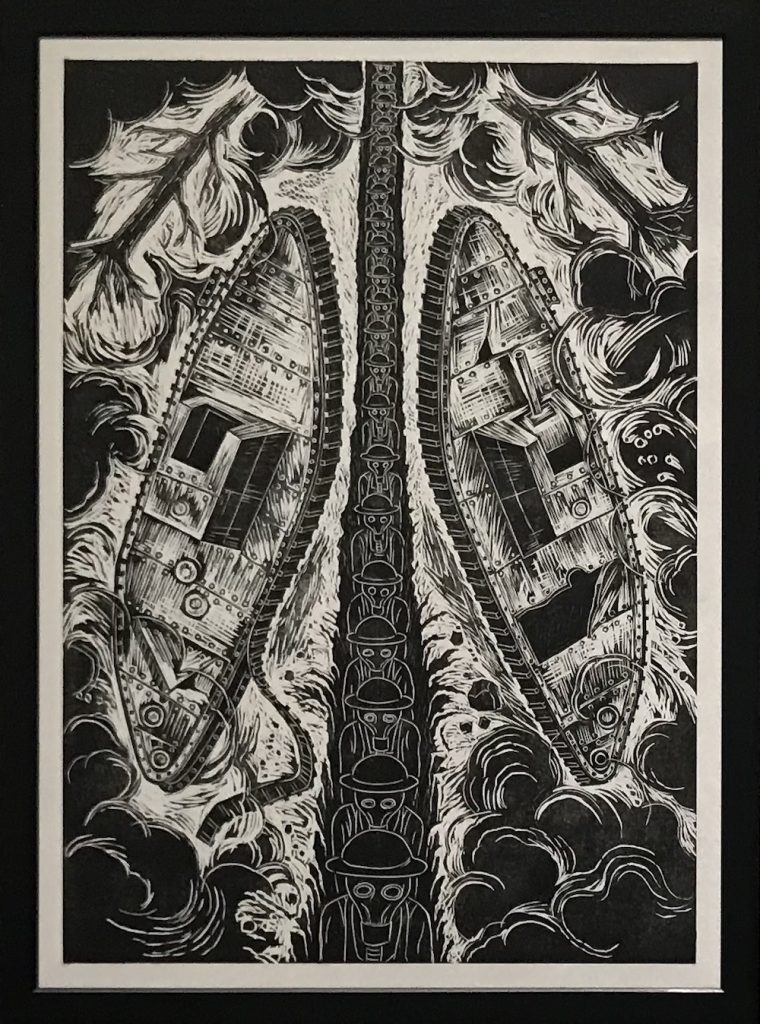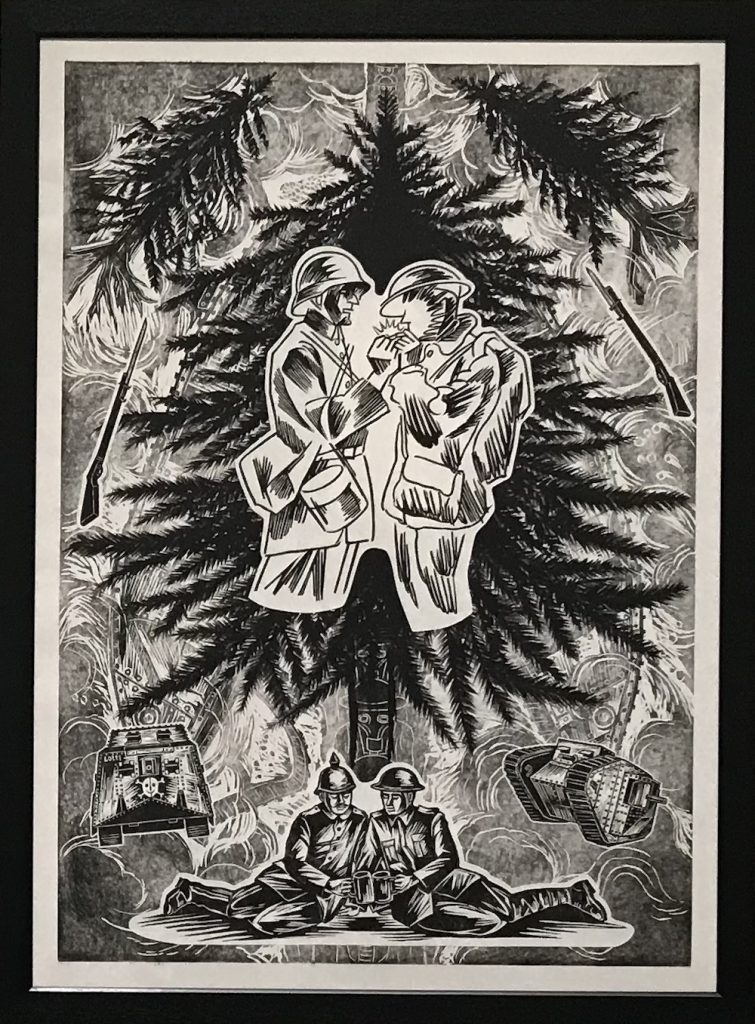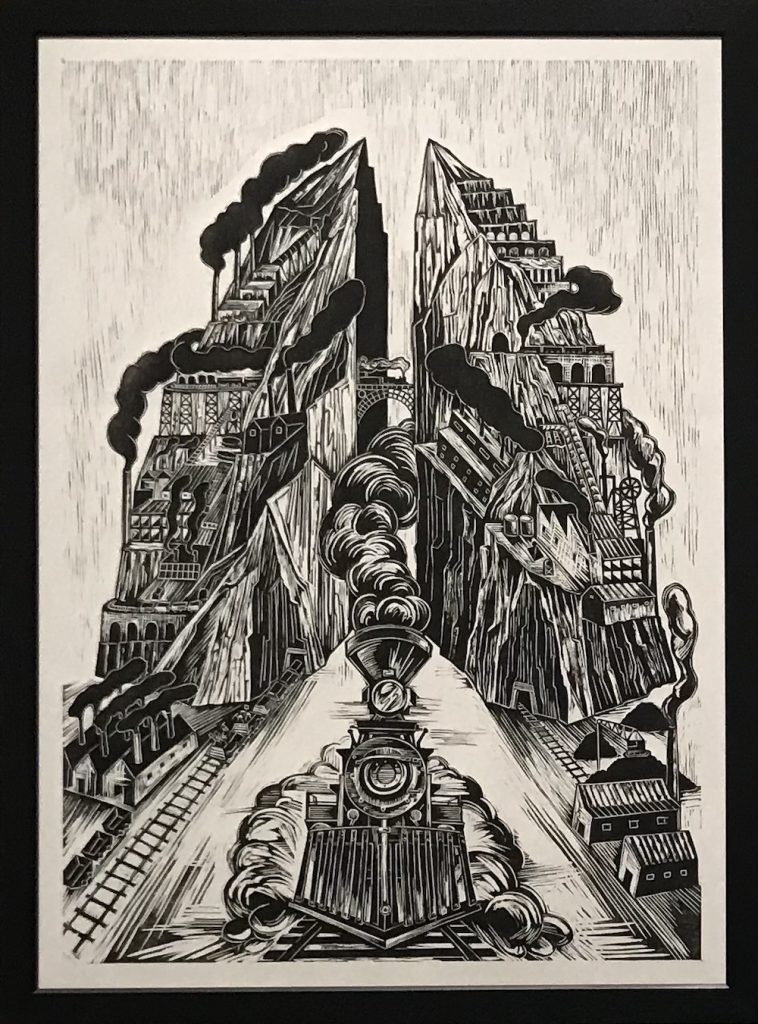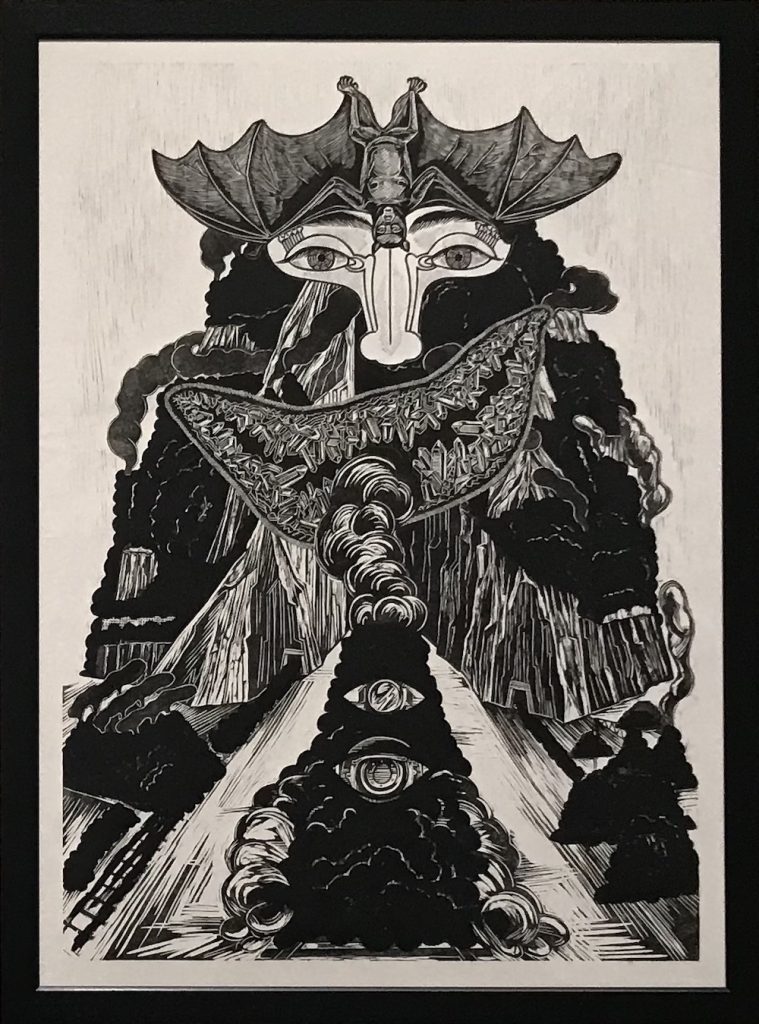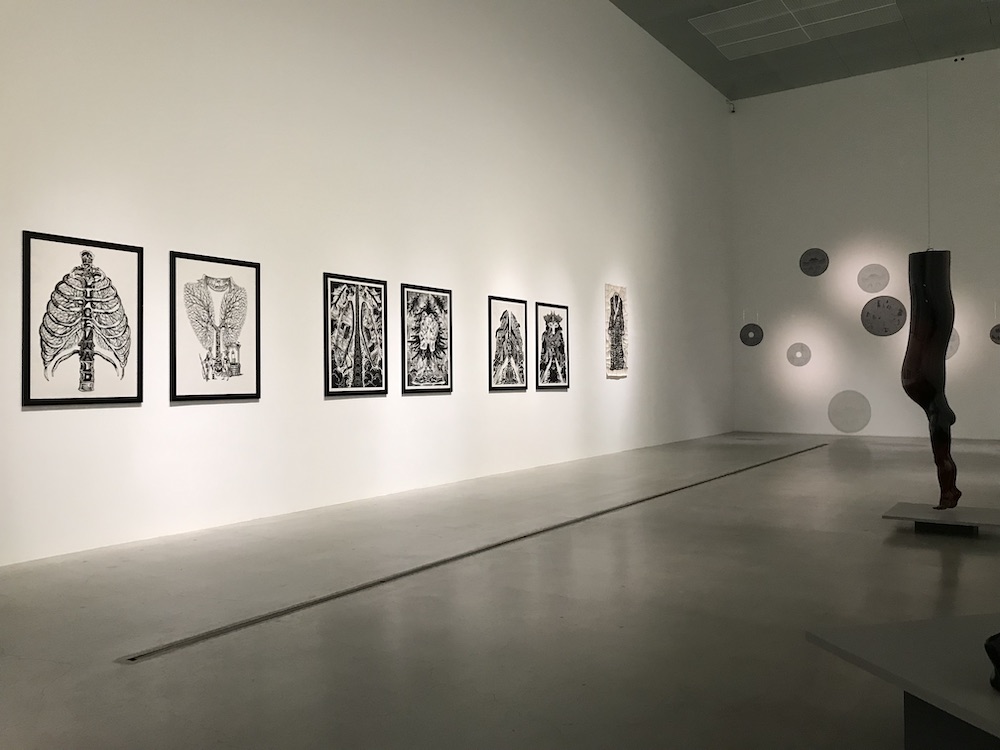woodcut print(panel, Japanese paper, oil ink)acrylic paint
138 x 99.5 cm (paper size) / 130 x 91.5 cm (image size)
Photo: Kenji Takahashi
Courtesy of Tokyo Arts and Space
”LUNGENWALD Series”
When discussing environmental issues, we sometimes liken forest regions to the “lungs of the earth.” Trees behave like lunges that breathe in carbon dioxide and breathe out oxygen, vital to the survival of living things, into the atmosphere, and that is why we must not cut down or burn the forests. It may be only self-centered, thoughtless human beings getting our just desserts, but today with the pandemic, our own lungs are in crisis. The burning in our lungs is becoming an even hotter topic than the wildfires engulfing our forests.
LUNGENWALD
The title is a portmanteau word that combines the German words Lungen (lungs) and Wald (forest), and the picture renders the blood vessels spreading throughout each of our pulmonary lobes as analogous to the fine branches of the tree, and the ribs and spine protecting the lungs like armor as analogous to a tree’s trunk. The human lungs die when they can't breathe because blood vessels and alveoli are inflamed, just as the “lungs of the earth" die when they cannot photosynthesize, or breathe, because branches and leaves have withered.
LINDENBAUM
In Lindenbaum, made with the same woodblock as Lungenwald, the withered lung-tree takes on the shape of a heart, evoking love and rebirth. The rustic, romantic iconography is derived from early 20th-century German prints, and inspired by a scene in Thomas Mann’s The Magic Mountain in which the protagonist Hans, having seen a vision in the snowy mountains, awakens (only for a moment) to the truce that love is greater than conflict between opposites, and by Franz SCHUBERT’s song Der Lindenbaum (The Linden Tree), in which the tree symbolizes the fleetingness of youth our clinging to the past, and our acceptance of the inevitable.
YPES FOG
The Mark I tank, symmetrically dismantled into a lung-like shape in Ypres fog, was the world's first practical tank used in warfare and was developed in the UK, the birthplace of the Industrial Revolution. The rhomboid tank, with treads wrapping around the entirety of its massive body nearly 10 meters in length, was designed to break the statement of trench warfare. As a first attempt, it had many defects, the worst of which for its operators was the wretched environment inside, The cockpit, extremely cramped and lacking ventilation, filled with hot air and smoke from the engine, and at times gas masks had to be worn. And outside the horribly stuffy tank was even greater hell! Hailstorms of bullets, trench battles that ground the spirit into the mud, chemical weapons it seems only the devil could have devised. This was the grotesque and nightmarish world of wounded soldiers rendered by Otto DIX. It is suffocating just to imagine this terror with no hope of escape. (In 1917 in the Battle of Ypres said to be the first instance of full-fledged chemical warfare, the German army used mustard gas. This blistering agent is also known as Yperite after the site of this battle.)
XMAS TRUCE
Xmas Truce is a peaceful reworking of the disturbing Ypres fog. The subject, weary German and British soldiers sharing the fire to lit a cigarette, is based on a news photo of the Christmas truce between the enemies during World War I. It is not clear whether or not this momentary peace was just a publicity stunt aimed at the international community. However, if a moment of forgiveness, even a falsified one, is repeated over and over, peace will be maintained, and the time may come someday when it will be taken for granted.
INDUSTRIAL MOUNTAINS
In “It's A Man's Man's Man's World,” James Brown sings that man made cars, trains, roads, and electric lights to take us out of the dark, and this is a man’s world… Coal dug from tunnels that spread through the dark earth like veins became the blood and sweat of workmen struggling in the darkness illuminates the house of the wealthy businessman. The gears of rationalism keep turning, the wheels of environmental devastation and inequality crush all in their path, trains burn through mountains of coal, and factories blacken the sky with rolling smoke to create a shining new world. This is the “man’s world” of modernization.
PRIMITIVE VEIN
Drawn on top of Industrial mountains is an ancient mountain goddess. She watches for traitors who steal natural resources with her empty Evil Eye, and if this demonic eye catches sight of the intruder will be cursed if his demonic eye catches sight of him. On the other hand, the gleam of crystal leaking from her mouth beckons the ambitious mountaineer. Like the Rhine's gold, the immaculate mineral seduces and promises prosperity and downfall.

